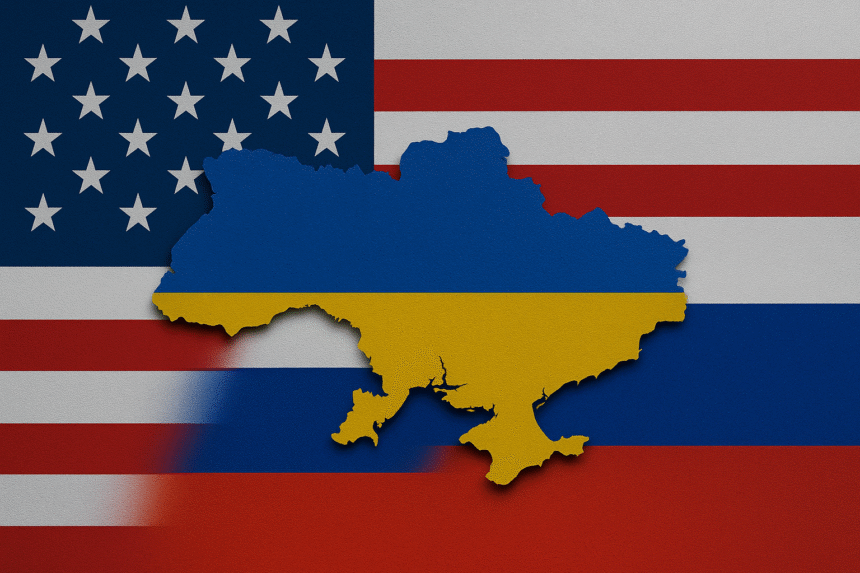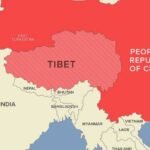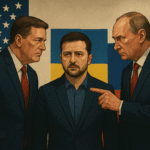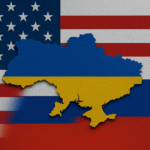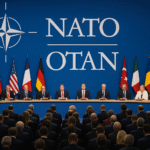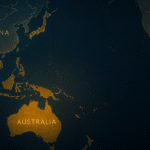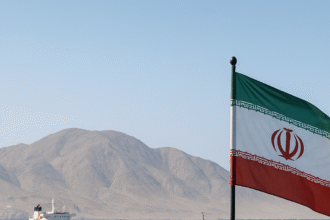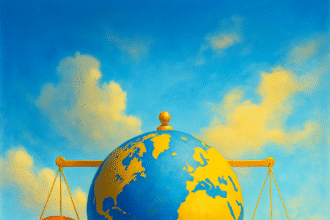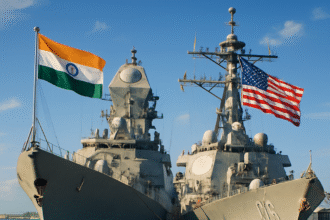When U.S. President Donald Trump meets Russian President Vladimir Putin in Alaska on 15 August, the geopolitical question is not whether the two leaders can strike a deal—it’s whether Ukraine will have any real say in it.
Over the weekend, Ukrainian President Volodymyr Zelenskyy secured a fresh wave of EU and NATO backing for Kyiv’s demand to be physically present at the summit. The sentiment was summed up by one EU diplomat in Brussels: “Nothing about Ukraine without Ukraine—this is the core principle.”
The White House has floated the possibility of a trilateral format but still frames the encounter as a U.S.–Russia meeting aimed at a “framework” for ending the war. That framing worries both Kyiv and European capitals: any agreement reached without Ukraine could erode its sovereignty, codify territorial losses, and fracture Western unity.
Ceasefire vs. Concession
Trump has hinted at a “land for peace” arrangement—allowing Russia to keep parts of eastern Ukraine in exchange for halting offensive operations and lifting some sanctions. For Moscow, this would be a diplomatic jackpot; for Kyiv, it would be political suicide.
NATO Secretary-General Mark Rutte publicly supported “testing Putin” but stressed that any deal must be just, lasting, and based on Ukraine’s internationally recognized borders. This conditional optimism is designed to maintain pressure on Moscow while giving Washington some room to negotiate.
Energy and Sanctions Leverage
Markets have already reacted. Brent crude fell to the mid-$60s as traders priced in a possible ceasefire, but energy analysts caution that the U.S. still has a potent card: secondary sanctions on Russian oil buyers. If talks collapse, Washington could tighten this net, directly targeting India, Turkey, and other middle-tier importers.
The Kremlin, meanwhile, has been quietly lobbying Gulf and Asian partners to resist further alignment with Western sanctions—another sign that Moscow is preparing for both a diplomatic opening and a prolonged standoff.
Security Guarantees: The Non-Negotiable Element
For Zelenskyy, the war’s end cannot be just the absence of fighting—it must include ironclad security guarantees that prevent a repeat of 2014 or 2022. Options on the table range from accelerated NATO membership to a U.S.–UK–France defense pact, but none are free of political and logistical hurdles.
Analysts warn that without such guarantees, any ceasefire risks becoming a frozen conflict—allowing Russia to regroup, rearm, and strike again when conditions are favorable.
Allied Unity Under Test
The Alaska summit will test not only U.S.–Russia relations but the cohesion of the Western alliance. A deal perceived as imposed on Ukraine could deepen transatlantic fractures, embolden revisionist powers elsewhere, and send an unmistakable message: great powers can redraw borders if they have the leverage.
The stakes, then, are not just about peace in Ukraine—they are about the architecture of the post-Cold War order itself.
ONN World View:
The real measure of the Alaska summit will not be the handshake or the headlines, but whether Ukraine walks away as a participant in its own future—or merely the subject of a deal between two presidents.

